Days of wandering the mountains and the sturdy nomadic corridors of Qinghai and Gansu have brought Taiwan’s world of lush Oolongs to my mind, though there are little external or obvious links…perhaps it is simply a ‘thirst’. Years have passed since my taste buds were last on the little island of volcanic greens and some of its famed tea offerings.
But, this is what makes a bit of unpredictable nostalgia and fantasy so enchanting: that it can strike at any time brought on by who knows what. To deny these mental wanderings is to deny what the brain and blood has lived, and this is especially the case with that permanent in my life, tea. Taiwan was after all where my tongue and brain were laid bare and demolished and ultimately guided and hooked by tea.
In this case, all that can be said is that sitting watching a storm roll in, with yak peppering the green expanse in northern Qinghai Province the smell of ‘wet air’ and a storm brings to mind rain…and in no part of the world that I’ve been, has rain – and its almost septic smell – made such a powerful impression as it has in Taiwan.
So, I sit on a grassland smelling and feeling this impending tide of water come and in slips a memory of a tea session of magnificent amounts of Dong Ding (aka Tung Ting). Dong Ding a small village and mountain sits at the western edge of the central mountain range running vertically through Taiwan, in Nantou County – a county that is literally imbued with tea – nothing moves, boils or breaths that isn’t somehow linked to the green leaf. It was also close to the epicenter of the ravaging 1999 earthquake, which ripped apart Taiwan. Within the Dong Ding region, almost sixty percent of the residents are tea farmers and the other forty are no doubt selling, supplying, transporting or simply knocking the stuff back by the litre. Even after the earthquake, devastating as it was, people got on with the business of tea.
As always my ‘delivery’ and arrival to a tea sanctuary is in part due to a good friend. In this case Lynn Wang, of Wang de Chuan Teas – an old and respected tea clan of Taiwan – has set me up with a demi-god of Taiwan’s tea world, Mr. Lu. Quiet and understated (at first) my host welcomes me with hospitality and meals that both humble and set the organs into a kind of insulin shock.
It doesn’t take long until we get into what its all about in this region – tea – specifically Dong Ding.
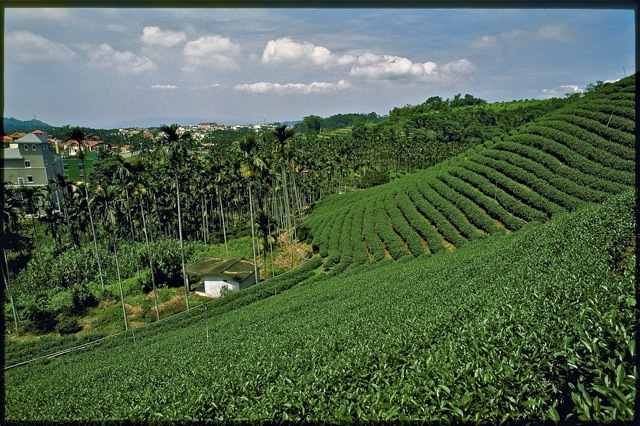
Near the town of Luku, lying around the base of Dong Ding Mountain itself. Though aesthetically pleasing these comfortable rows lack much of the shade needed for tea bushes to grow 'best'
Mr. Lu actually owns tea gardens, an entire ‘mountain’ in fact, and has the kind of neurotic knowledge of tea that puts him comfortably in a bracket that makes up for any idiosyncrasies. Like many true tea people, there is an initial hesitation and assessment period with Mr. Lu while he sorts out whether I’m an imbecile with good intentions, someone genuinely interested in tea or an accidental traveler.
With intentions and credentials (mine at this point is simply of a devout drinker) out of the way we travel to his ‘tea gardens’ – young tea bushes being carefully tended to so that after three years – which is a sort of minimum in this part of the world for a tea bush to start producing decent teas – he will be able to harvest and sell his teas. Patience and care are crucials.
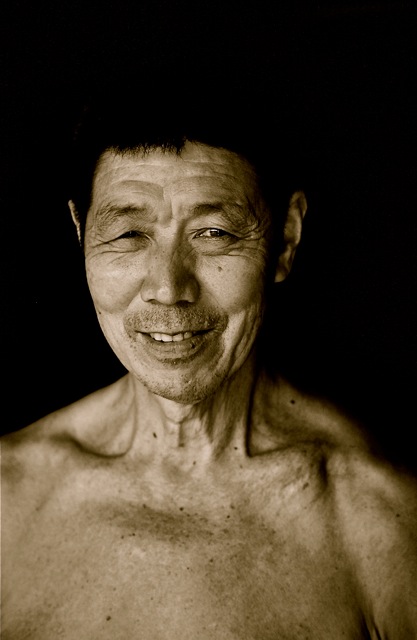
Crucial and under appreciated are the tea producers – men and women who actually take the harvested tea and get the green leaves to their eventual desiccated form. This tea maker at 70 looked years younger…attributed to his tea consumption
We walk through a tight series of hills that have nubile tea bushes planted in a casual sort of organization. Mr. Lu’s lean body and fine features betray only an intense concern for his children as he stoops, turns and once in a while utters something unintelligible. He makes a point that is made often within the sanctums of tea drinkers, that it is vital to know who is growing and producing a tea. This is, in his words, as important as knowing the geographic location. Attention to detail and an ability to create consistent teas are of prime importance. Teas grow but in this part of the world, they do not create themselves.
“Dong Ding is one of Taiwan’s classic Oolongs, and you don’t try to enhance classics…”, he tells me, though later on in our relationship I am to find out that he can and does ‘tinker’ a bit with this truth. He slips in another tidbit about the ‘wheres’ of a tea’s origins. South facing tea hills, for him, are always superior, providing they have ample shade, while North facing tea hills often create teas that are ‘too cold’ (making reference to tea’s ‘ying/yang’ aspect). Already considered within China’s great and ancient medicinal encyclopedias, as a ‘cool’ or anti-inflammatory element, tea can actually become too ‘cold’ when grown in ‘un-thoughtful locations’.
Where we march through is a little over eight hundred metres altitude, which allows for Taiwan’s famous humid mists and fogs to cascade over the leaves in cool unending waves.
Dong Ding or Tung-Ting, known to the occidental world as ‘Cold Summit’ is a tea that has, like many, has been the unfortunate victim of western attempts to ‘re-jig’ and orchestrate a more marketable ‘sounding’ product. Dong Ding has often been titled as ‘Jade Oolong’, no doubt because the aesthetic ring is thought to enhance the ‘Cold Summit’ moniker.
Whatever else it is, Dong Ding tea is not a Jade Oolong. Dong Ding’s grow (or should) grow higher and in cooler climes, which slightly slows the maturation but ensures a deeper and more genuine taste. Dong Ding’s are also harvested only twice a year – as opposed to many other more heavily marketed teas, which are over-harvested, some as many as a half-dozen destructive plucks a year.
Mr. Lu’s features become disdainful when the subject of fiddling with the nomenclature of tea comes up. Like any true impassioned student, his ire is combined with a kind of seething hate regarding ‘trends’ and obfuscating something that is inherently simple.
Much of his sage and impassioned monologue has been forgotten over time, but I do recall with a pleasant shiver a particularly sharp comment (with an accompanying grimace) when he attacked the forces that seek to turn tea into a ‘product’ with no basic knowledge imparted. The words “fraud in the world of tea is to be expected, but there should be heavy punishments dealt out to those that attempt to deceive this ancient right to consume tea in good faith”, or something very similar made a huge impression upon me – enough that I was madly scribbling away while he raged. Words were meaningless out of some mouths, but mouths that sipped (and knew) tea, like his, provide snippets of brilliance – not only about sales, but also about tea’s philosophy.
Though altitudes are given much importance – higher altitude “high mountain Oolongs” command increasingly restrictive prices – Mr. Lu scowls a bit at this as well when finally we sit for a ‘series’ of teas. Though Dong Ding likes the high ground – up to a thousand metres, Mr. Lu says a real Dong Ding can grow as low as six hundred metres, though as he talks it seems to distress him to try and qualify exact details and numbers. “Altitude is important, but if the production process isn’t exact, what use is altitude”? Dong Ding does have a reputation though along with other high altitude teas – in Japan they are known as the famed ‘takayama’ – ‘high mountain’, and revered for consistent quality, though Japanese still much prefer their own stunning greens and Pu’erhs.
We sit in a chaos of plants, tea, papers and calligraphy. Mr. Lu’s office is comfortable in the way that a place is at peace because of a complete lack of pretention. Tea pots sit in an apparent contradiction to the rest of the room. They are lined carefully upon a medicine chest that has been kept immaculate.
Mr. Lu has rolled up his sleeves and there are two other guests. We will, we are told, on this sweltering afternoon try three Dong Ding’s – all made by the same tea master (his name isn’t even mentioned). One is a new spring (April) harvest, one a lightly roasted Dong Ding (last year’s November), and the last whose contents are in a handwritten labeled silver bag.
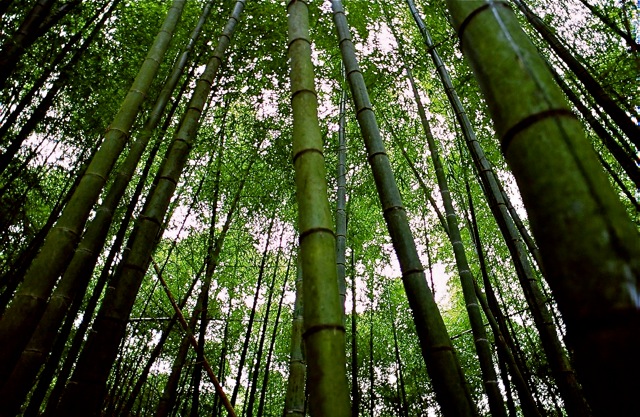
What many tea growers say is a must for a true tea garden – bamboo forests which supplement minerals, provide shade and add a dimension of green
Mr. Lu’s hand hovers above it and there is a slight softening of his sharp features – clearly a favourite child.
Our first round of the newly harvested spring tea is a green, fresh palate cleanser that, though good, for me lacks any kind of biting power that inevitably sets my tongue alight. We cruise through this with Mr. Lu watching us carefully but making little in the way of comments. Yes, it is light and unobtrusive but my own buds are waiting for something that drills through the skin of the cheeks.
Mr. Lu prepares the first roasted Dong Ding which ups the tempo a little – the longer baking time giving a little more that the tongue can grab onto, though the finish is still classic – sweet and mild. One of the tea drinkers beside me makes a comment that this tea is more “interesting”. Mr. Lu still says little other than baking or roasting can hide inferior teas that are picked too early or poorly produced…still, the tang with this one is almost narcotic.
Of course the third tea has us all in slightly idiotic states of expectation – the saviour has come! I notice that Mr. Lu seems to be measuring the tightly rolled balls with a tad more attention and conviction. The coiled balls are darker than either of the two previous sippers. After rinsing the first pot, we are gifted an inhalation or two. There is no light essences or perfume to this smoky almost acrid vapour waft. Whatever else the tea is or isn’t, it pounds its attributes out up into my sinuses. Mr. Lu is smiling as we have all evidently detected something sublime inside the tiny-lidded Yixing pot.
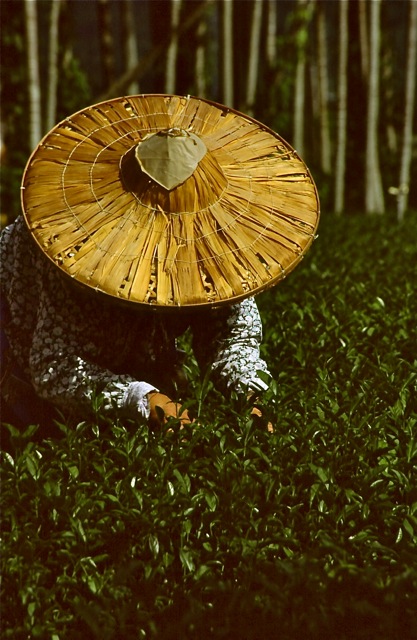
One of the unsung heroes of the entire tea process – and a profession that is seeing less and less aspirants – the tea picker
We reach the third infusion silent. Smokey, light and a taste that doesn’t stop sifting through the mouth, it is a tea that hits parts of the palate that are rarely enthused. Mr. Lu is no longer at all concerned with us…he is fixed on the cup and a point somewhere in mid-space. He knows what we are consuming is something beyond what even classic teas can offer.
“Double-roasted”, he mutters…we find out later that he himself has a little ‘lab’ that he disappears into with batches of good harvests to try his hand at a little alchemy once in a while. This is a batch that he created – a two-year-old November harvest that he took a portion aside of and roasted immediately. A year later he re-roasted it carefully – a mere 2 kg’s in total that on our day of drinking a little under a kilo still exists.
We leave with Mr. Lu telling us we have consumed three great Dong Ding’s and making the point that none was necessarily superior to another, but acknowledging that we were treated to one in particular that hitting something a little divine in the mouth.
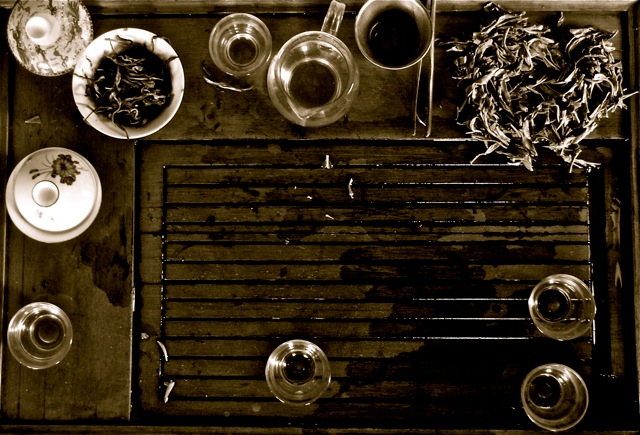
The random and concluding chaos of any good tea session, the remnants and dregs…that sit and wait for another session
Such are the all too infrequent brushes with a tea whose ‘everything’ comes together…and someone who is willing to share. Leaving the comfortably chaotic office before dinner, I decide not to eat and leave as much of the taste in my mouth as possible for as long as I can manage.
For the present though, my vista has yak continuing to move by under a big Qinghai sky.

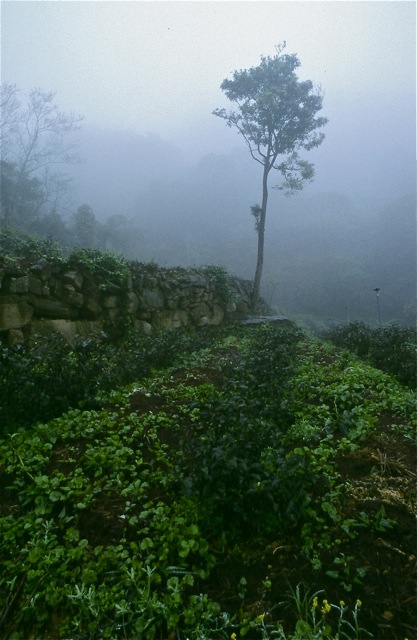
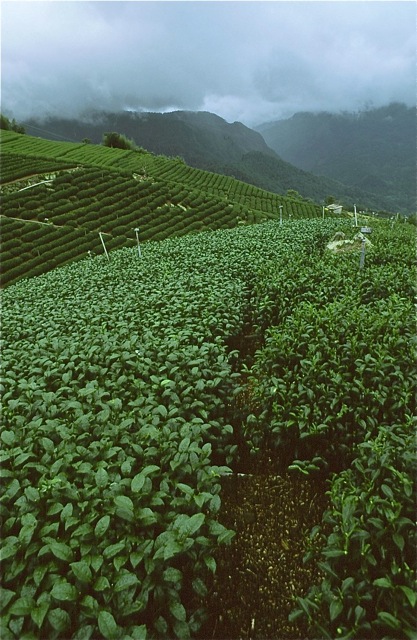
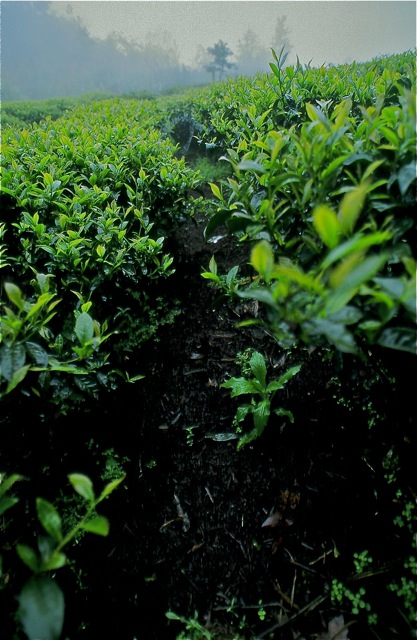
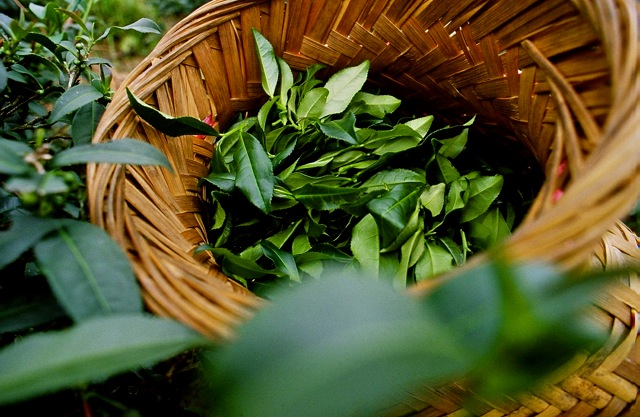
Great memories from Taiwan, Jeff. Do you plan to return for another visit, and round of tea-tasting, sometime soon?
Your comment “… but my own buds are waiting for something that drills through the skin of the cheeks.” brought a smile to my face, as I too enjoy a strongly-flavoured tea.
Best wishes,
Peter
Peter,
Plan to go back next year. So many little areas to see again, and tea to ‘take’. Every typhoon season the island loses more ‘tea’ earth and I get updates and snippets…but they aren’t enough. The eyes and taste buds have to get back there.
Yes, the mouth often needs a tea that grabs it…like now.
best to you Peter,
Jeff
A great story and fantastic images. It’s really evoking my fond memories of Taiwan.
“It is vital to know who is growing and producing a tea.” I must agree, because knowing these things makes that the tea that much sweeter.
Thanks for the note David…I don’t know how many times I’ve gotten into a tea, from an apparently noted tea region (with a price that defies) only to sip and sip and sip…and wonder where it is in fact from and if any passion or understanding at all was put into the production.
As you say…when something does hit the right notes it is sweet.
Jeff